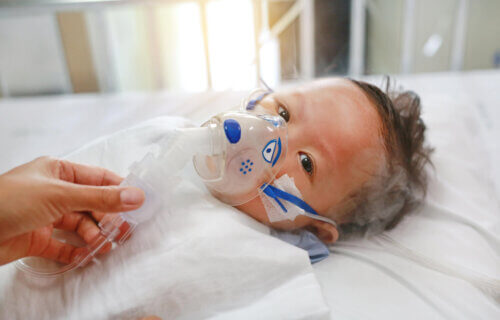CHICAGO — RSV, or respiratory syncytial virus, may be fairly harmless to healthy adults — but it can be extremely dangerous to young children and the elderly. In fact, infants younger than 12 months face a high risk of ending up in the hospital due to the illness. Knowing the signs of an RSV infection could mean the difference between life and death for some babies — with three subtle symptoms being the only red flags parents have to work with.
RSV typically cause cold-like symptoms for a majority of infected people. In infants whose immune systems are still developing, however, the virus can cause severe complications. Babies living in low and middle-income countries with inadequate access to medical care are at an even higher risk of dying from their viral infection.
Luckily, a recent study has found that there may be a way to tell which children will need intensive care and how long they’ll be there. Researchers from Ann & Robert H. Lurie Children’s Hospital of Chicago say nasal swabs can reveal which genes have been switched on by RSV. Children that had more damage to the cell linings of the nose ended up staying longer in the pediatric intensive care unit (PICU).
“We were excited to find that the severity of a child’s illness related to the different sets of genes turned on in their body’s response to RSV,” says senior author Bria Coates, MD, Critical Care physician at Lurie Children’s and Assistant Professor of Pediatrics at Northwestern University Feinberg School of Medicine, in a media release. “The ability to identify which infants with RSV in intensive care will recover quickly and which patients will require a longer stay would provide invaluable information to parents and medical providers.”
Dr. Coates notes that if the results hold true in larger clinic studies, scientists could develop a PCR test specifically for RSV which distinguishes which children have a severe case of the virus. The results are published in the journal Frontiers in Immunology.
Spotting 3 symptoms is critical among infants
An RSV infection usually starts to display symptoms within four to six days. For most people, the Centers for Disease Control and Prevention says these include runny nose, decrease in appetite, coughing, sneezing, fever, and wheezing.
Among generally healthy patients, the illness goes away on its own in a week or two. These patients are also unlikely to need hospitalization and there is currently no specific treatment for RSV, although scientists continue to work on a vaccine for the virus.
However, young infants who have no way of telling adults they’re feeling sick may not display these symptoms at first. According to the CDC, these are the only signs a baby with RSV may display:
- Irritability
- Decreased activity
- Breathing difficulties
Health officials note nearly all children contract RSV before their second birthday. For those who get sick before reaching 12 months, RSV is the most common cause of bronchiolitis and pneumonia. For younger than six months are the most likely to need hospitalization for breathing issues and dehydration.
A previous study suggests that older estimates of 120,000 infant deaths from RSV are actually much higher. When scientists included mortality rates from hospital data, the projections jumped up to one in every 10 deaths among infants under six months.
